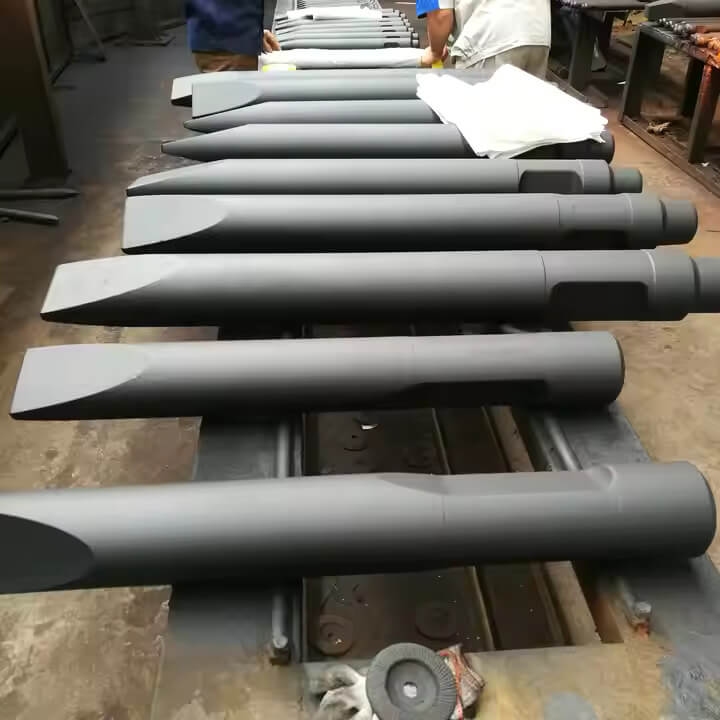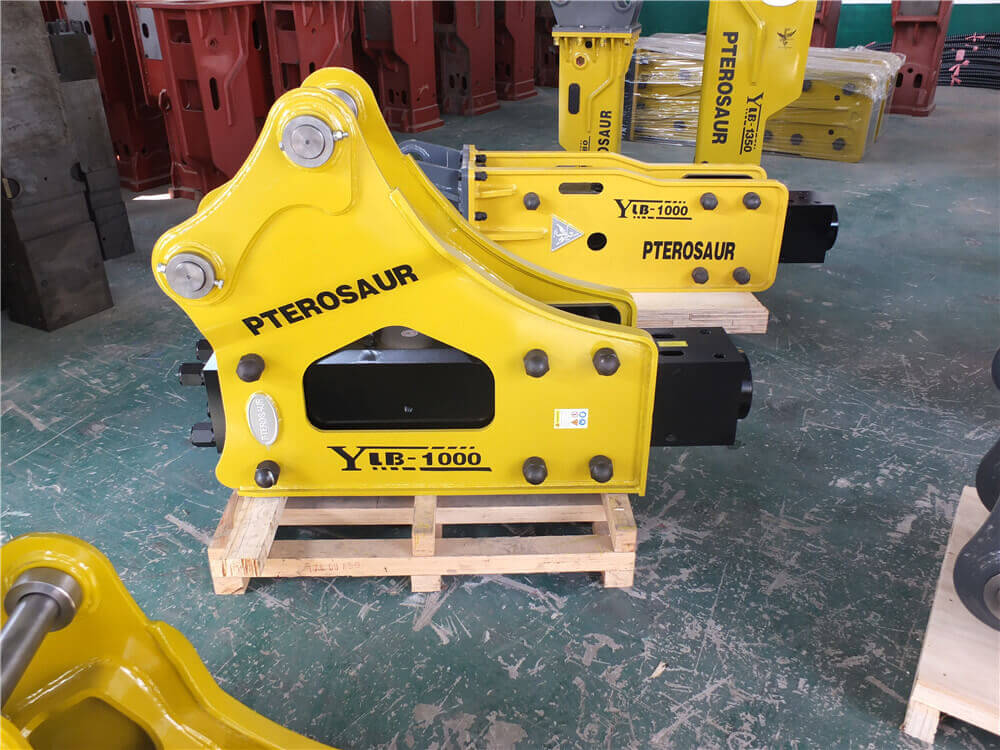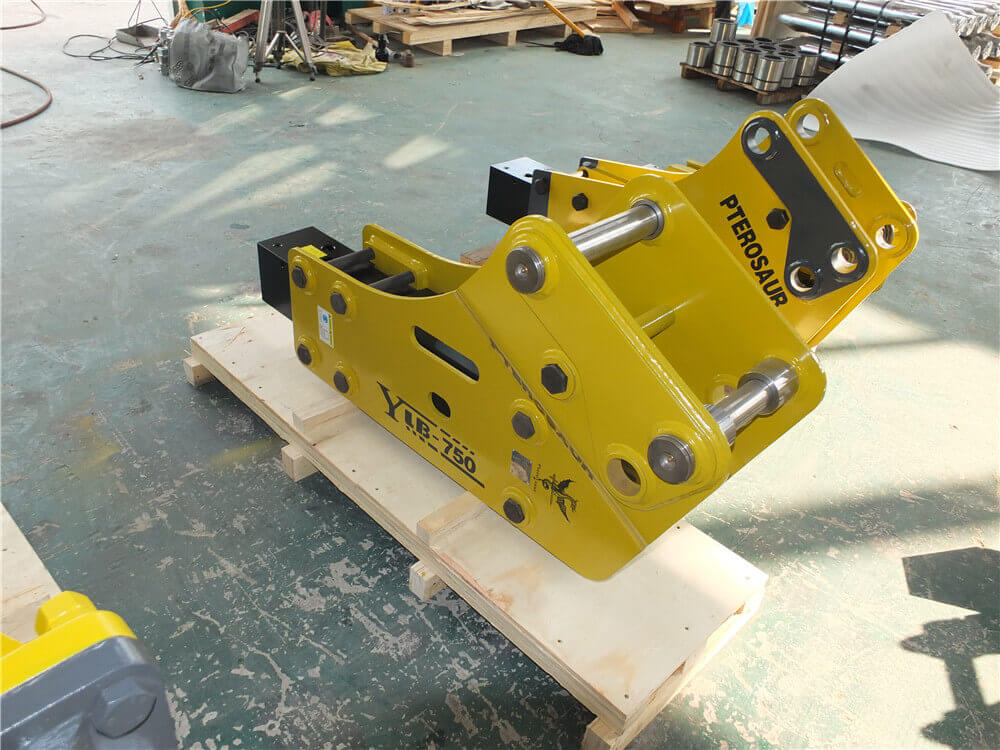
Maintaining the proper nitrogen pressure is crucial for the effective functioning of hydraulic hammer systems. This guide outlines the steps to check and adjust nitrogen gas pressure, along with remedies for common issues.
Checking Nitrogen Pressure
- Preparation: Ensure there is no preload on the tool. Remove the tool or extend the hammer fully.
- Accessing the Charge Valve: Remove the charge valve cap from the hammer’s charge valve. Important: Do not remove the entire charge valve assembly.
- Using the Charge Adapter:
- Rotate the T-handle of the charge adapter fully counterclockwise.
- Install the adapter on the hammer charge valve located on the gas head.
- Tighten the charge adapter cap securely.
- Reading the Pressure:
- Turn the T-handle clockwise until you feel resistance.
- Continue turning until the pressure gauge displays a reading.
- Avoid overtightening.
- Comparing Pressure:
- Compare the gauge reading with the nitrogen gas pre-charge chart located in the charge valve box lid or the operator’s manual.
- If the pressure is 25 psi below specification, follow the nitrogen gas charging procedure.
- If the pressure is 25 psi above specification, follow the nitrogen gas discharging procedure.
- If the pressure is within specification, turn the T-handle counterclockwise until it stops to close the adapter.
- Relieving Pressure:
- Slowly loosen the charge adapter cap to relieve any trapped nitrogen gas pressure.
- Remove the charge adapter from the valve and replace the cap.
Charging Nitrogen Gas
- Safety Precautions: When adding nitrogen, keep clear of the tool as gas may escape abruptly.
- Connecting the Nitrogen Tank:
- Connect the nitrogen tank to the charge adapter using a pressure regulator and hose.
- Ensure the nitrogen tank is closed.
- Turn the T-handle on the tank regulator fully clockwise to close it.
- Turn the T-handle on the charge adapter clockwise until the gauge indicates pressure.
- Filling the System:
- Open the nitrogen tank slowly.
- Gradually turn the regulator T-handle clockwise until the correct pre-charge is achieved.
- Close all valves, release pressure slowly, and replace the caps.
Discharging Nitrogen Gas
When disassembling the hammer or storing it for an extended period, it’s essential to discharge the nitrogen system:
- Preparation: Remove the charge valve cap from the charge valve on the hammer gas head.
- Using the Charge Adapter: Install a closed charge adapter and tighten the cap.
- Discharging Pressure:
- Turn the T-handle until it shows pressure.
- Slowly loosen the charge adapter cap until the gauge reads zero.
- Once at zero, remove the adapter assembly and replace the charge valve cap.
Troubleshooting
If the hammer loses more than 25 psi within a 24-hour period, a gas leak may be present. To locate the leak, spray soapy water on the following areas:
- The gas charge valve
- The vent plug on the side of the hammer’s main body
- The joint between the gas head and the hammer main body
Leakage in any of these areas will require resealing of the hammer.
Hydraulic Breaker Nitrogen Pressure
The amount of nitrogen to be added is a common concern among excavator operators. Generally, the more nitrogen added, the higher the pressure in the accumulator. However, the optimal working pressure of accumulators varies depending on the model of the hydraulic breaker and external conditions. Typically, the pressure should be maintained between 1.4 and 1.6 MPa (approximately 14 to 16 kg).
Why Do We Charge the Hydraulic Breaker with Nitrogen?
Nitrogen plays a crucial role in the hydraulic breaker system, primarily through a key component: the accumulator. The accumulator is filled with nitrogen, which stores the remaining energy from the previous blow and the energy generated by the piston’s recoil. This stored energy is released during the next blow, enhancing the striking power of the breaker. In essence, the function of nitrogen is to increase strike energy, making the amount of nitrogen in the accumulator directly linked to the hydraulic breaker’s performance.
Specific steps
- Connect the Pressure Gauge: Attach the pressure gauge to the three-way valve and turn the valve handle counterclockwise.
- Connect the Hose: Attach one end of the hose to the nitrogen cylinder.
- Install the Three-Way Valve: Remove the screw plug from the breaker and install the three-way valve on the charging valve of the cylinder. Ensure the O-ring is properly installed on the three-way valve.
- Connect the Hose to the Valve: Attach the other end of the hose to the three-way valve.
- Release Nitrogen Gas: Turn the valve handle on the nitrogen cylinder counterclockwise to release nitrogen gas (N2). Gradually turn the three-way valve handle clockwise until you reach the specified set pressure.
- Close the Valves: Turn the three-way valve handle counterclockwise to close it, then turn the nitrogen cylinder valve handle clockwise to close it.
- Remove the Hose: After removing the hose from the three-way valve, ensure the three-way valve is closed.
- Recheck Cylinder Pressure: Turn the three-way valve handle clockwise to recheck the cylinder pressure.
- Final Adjustments:
- Remove the hose from the three-way valve.
- Tighten the three-way valve onto the charge valve.
- When the three-way valve handle is turned clockwise, the pressure in the cylinder will be displayed on the gauge.
- Adjust Nitrogen Pressure:
- If the nitrogen pressure is low, repeat steps 1 to 8 until the pressure reaches the specified level.
- If the pressure is too high, slowly turn the regulator on the three-way valve counterclockwise to discharge nitrogen until the gauge indicates the proper pressure. Then, close the regulator by turning it clockwise.
Important: If the pressure is too high, the hydraulic breaker will not function properly. Ensure that the pressure is within the specified range and that the O-ring is correctly installed on the three-way valve.



